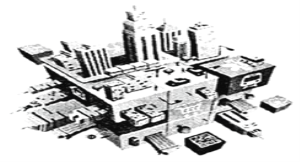
°æƒø°øºŸ∂®”¢”ÔøŒ…œ¿œ ¶“™«ÛÕ¨◊¿÷ƺ‰Ωªªª–Þ∏ƒ◊˜Œƒ£¨«Îƒ„–Þ∏ƒƒ„Õ¨◊¿–¥µƒ“‘œ¬◊˜Œƒ°£Œƒ÷–π≤”–10¥¶”Ô—‘¥ÌŒÛ£¨√øæ‰÷–◊Ó∂ý”–¡Ω¥¶°£√ª≥ˆ¥ÌŒÛΩˆ…ʺ∞“ª∏ˆµ•¥ µƒ‘ˆº”°¢…æ≥˝ªÚ–Þ∏ƒ°£
‘ˆº”£∫‘⁄»±¥ ¥¶º”“ª∏ˆ¬©◊÷∑˚∫≈£®![]() £©£¨≤¢‘⁄∆‰œ¬√Ê–¥≥ˆ∏√¥ °£
£©£¨≤¢‘⁄∆‰œ¬√Ê–¥≥ˆ∏√¥ °£
…æ≥˝£∫∞—∂ý”ýµƒ¥ ”√–±œþ£®\£©ªÆµÙ°£
–Þ∏ƒ£∫‘⁄¥Ìµƒ¥ œ¬ªÆ“ª∫·œþ£¨≤¢‘⁄∏√¥ œ¬√Ê–¥≥ˆ–Þ∏ƒ∫Ûµƒ¥ °£
◊¢“‚£∫1. √ø¥¶¥ÌŒÛ“‘º∞–Þ∏ƒæ˘ΩˆœÞ“ª¥ °£
2. ÷ª‘ –Ì–Þ∏ƒ10¥¶£¨∂ý’þ£®¥”µ⁄11¥¶∆£©≤ªº∆∑÷°£
My brother Donald didn°Øt do well in math. When the day of the exam comes, Donald sat next to Brian, which was always good at math. Donald careful copied Brian°Øs answers. At end of the exam, the teacher collected the papers and graded it. Then she decided to give a prize to the student who got the high grade. But it was a bit of difficult for her to make a decision, because Donald and Brian got the same grade. The teacher thought about that and made on her mind to give the prize to Brian. Donald said it was unfair. °∞That°Øs true,°± the teacher said. °∞Therefore, Brian°Øs answer to Question 18 was °ÆI don°Øt know°Ø. Your was °ÆNeither do I°Ø.°±
°æ¥∞∏°ø
°æ1°øComes°™came
°æ2°øWhich---who
°æ3°øCareful---carefully
°æ4°øAt ∫Ûº”the
°æ5°øit ---- them
°æ6°øHigh----highest
°æ7°øA bit ∫Û»•µÙof
°æ8°øOn---up
°æ9°øTherefore--- However
°æ10°øYour----Yours
°æΩ‚Œˆ°ø
‘Ã‚Ω‚Œˆ£∫’‚ «“ª∆¨º«–Œƒ£¨◊˜’þΩ≤ ˆ¡À◊‘º∫–÷µÐ“ÚŒ™ ˝—ß≤ª∫√£¨‘⁄øº≥°…œ◊˜±◊≤¢“˝∑¢“ªœµ¡––¶ª∞µƒ ¬«È°£øºµ„∑˚∫œ∏þøº≥£øºπʬ…£¨ƒ—∂» ÷–°£
°æ1°ø±æŒƒ «’æ‘⁄œ÷‘⁄µƒΩ«∂»£¨√Ë ˆπ˝»•∑¢…˙µƒ ¬«È£¨◊ðπ€»´Œƒ£¨ ±Ã¨”√µƒ∂º «“ª∞„π˝»• Ω£¨π ’‚¿Ô∑∏¡À ±Ã¨¥ÌŒÛ£¨”¶”√“ª∞„π˝»• Ω°£
°æ2°ø∏˘æð’‚“ªæ‰«∞√ʵƒ∂∫∫≈∫Õœ»––¥ ø…“‘≈–∂œ£¨¥À¥¶”¶∏√ «who“˝µºµƒ∑«œÞ÷∆–‘∂®”Ô¥”扣¨÷˜”Ô «»À£¨π ”√Who“˝µº°£
°æ3°ø∏√扵ƒcopyŒ™∂Ø¥ £¨Œ™°∞∏¥÷∆£¨øΩ±¥£¨≥≠œÆ°±carefulŒ™–Œ»ð¥ £¨¥À¥¶”¶∏√±‰ªØŒ™∏±¥ £¨“ÚŒ™∏±¥ ¿¥–Þ Œ∂Ø¥ °£
°æ4°øøº≤ÈπÃ∂®¥Ó≈‰£¨at the end of...‘⁄....Ω·Œ≤¥¶£¨µΩ¡À◊Ó∫Û°£
°æ5°øøº≤È¥˙¥ ”√∑®°£’‚¿Ôµƒthem÷∏¥˙µƒ «papers£® ‘æÌ£¨Œ™ø… ˝√˚¥ £©£¨∏√”√itµƒ∏¥ ˝–Œ Ωthem°£
°æ6°øøº≤È…œœ¬Œƒ”Ôæ≥°£∏˘æ𜬌ƒø…÷™¿œ ¶ «œÎÃÙ—°≥ˆ◊Ó∏þ∑÷µƒ»À¿¥∞‰∑¢Ω±œÓ£¨¥À¥¶”¶∏√”√◊Ó∏þº∂°£
°æ7°øøº≤È–°¥ ”√∑®°£A bit+–Œ»ð¥ a bit of+≤ªø… ˝√˚¥ £¨«¯±’‚¡Ω∏ˆµƒ”√∑®£¨’‚¿Ô«øµ˜µƒ «◊ˆ≥ˆ—°‘Ò «¿ßƒ—µƒ°£
°æ8°øøº≤ÈπÃ∂®¥Ó≈‰∫Õ”Ôæ≥°£∏˘æð”Ôæ≥£¨”¶Œ™make up one°Øs mindœ¬∂®æˆ–ƒµƒ“‚Àº°£
°æ9°ø¿œ ¶‘⁄’‚¿Ôª∞∑Á“ª◊™£¨œ‘»ª «◊™’€πÿœµ£¨≤¢∑«µðΩ¯πÿœµ°£
°æ10°øøº≤ϵ•æ‰”Ô∑®∑÷Œˆ°£ °∞Your was °ÆNeither do I°Ø°±’‚扵ƒŒΩ”Ô «was£¨π «∞√Ê”¶∏√ «“ª∏ˆ÷˜”Ô£¨∂¯your∑≠“Î≥…ƒ„µƒ...£®◊ˆ∂®”Ô≥…∑÷£¨∆–Þ Œ◊˜”√£©£¨”¶∏√”√yours£®¥˙¥ £©¿¥◊ˆ÷˜”Ô°£



| ƒÍº∂ | ∏þ÷–øŒ≥à | ƒÍº∂ | ≥ı÷–øŒ≥à |
| ∏þ“ª | ∏þ“ª√‚∑—øŒ≥ÃÕ∆ºˆ£° | ≥ı“ª | ≥ı“ª√‚∑—øŒ≥ÃÕ∆ºˆ£° |
| ∏þ∂˛ | ∏þ∂˛√‚∑—øŒ≥ÃÕ∆ºˆ£° | ≥ı∂˛ | ≥ı∂˛√‚∑—øŒ≥ÃÕ∆ºˆ£° |
| ∏þ»˝ | ∏þ»˝√‚∑—øŒ≥ÃÕ∆ºˆ£° | ≥ı»˝ | ≥ı»˝√‚∑—øŒ≥ÃÕ∆ºˆ£° |
ø∆ƒø£∫∏þ÷–”¢”Ô ¿¥‘¥£∫ –գ∫
°æƒø°øºŸ…˃„ «∫Ï–«÷–—ß∏þ∂˛£®1£©∞ýµƒ—ß…˙¿Óª™°£œ¬√ÊÀƒ∑˘Õº√Ë ˆ¡Àƒ„¥”Õº ÈπðΩË Èº∞“‘∫Û∑¢…˙µƒ ¬«È, «Î∏˘æðÕº∆¨µƒœ»∫ÛÀ≥–Ú, Œ™–£øØ°∞”¢”Ô‘∞µÿ°±–¥“ª∆™∂ÃŒƒ°£¥ ˝≤ª…Ÿ”⁄60°£

___________________________________________________________________________
___________________________________________________________________________
___________________________________________________________________________
___________________________________________________________________________
___________________________________________________________________________
___________________________________________________________________________
≤Èø¥¥∞∏∫ÕΩ‚Œˆ>>
ø∆ƒø£∫∏þ÷–”¢”Ô ¿¥‘¥£∫ –գ∫
°æƒø°øHow could we possibly think that keeping animals in cages in unnatural environments£≠mostly for entertainment purposes£≠is fair and respectful?
Zoo officials say they are concerned about animals. However, most zoos remain °∞collections°± of interesting °∞things°± rather than protective habitats(∆Ðœ¢µÿ). Zoos teach people that it is acceptable to keep animals bored, lonely, and far from their natural homes.
Zoos claim to educate people and save endangered species(ŒÔ÷÷), but visitors leave zoos without having learned anything meaningful about the animals°Ø natural behavior, intelligence, or beauty. Zoos keep animals in small spaces or cages, and most signs only mention the species°Ø name, diet, and natural range(∑÷≤º«¯). The animals°Ø normal behavior is seldom noticed because zoos don°Øt usually take care of the animals°Ø natural needs.
The animals are kept together in small spaces, with no privacy and little opportunity for mental and physical exercise. This results in unusually and self-destructive behavior called zoochosis. A worldwide study of zoos found that zoochosis is common among animals kept in small spaces or cages. Another study showed that elephants spend 22 percent of their time making repeated head movements or biting cage bars, and bears spend 30 percent of their time walking back and forth, a sign of unhappiness and pain.
Furthermore, most animals in zoos are not endangered£ÆCaptive breeding(»¶—¯∑±÷≥) of endangered big cats, Asian elephants, and other species has not resulted in their being sent back to the wild£ÆZoos talk a lot about their captive breeding programs because they do not want people to worry about a species dying out. In fact, baby animals also attract a lot of paying customers. Haven°Øt we seen enough competitions to name baby animals?
![]() Actually, we will save endangered species only if we save their habitats and put an end to the reasons people kill them. Instead of supporting zoos, we should support groups that work to protect animals°Ø natural habitats.
Actually, we will save endangered species only if we save their habitats and put an end to the reasons people kill them. Instead of supporting zoos, we should support groups that work to protect animals°Ø natural habitats.
°æ1°øIn the state of zoochosis, animals _________.
A£Æremain in cages B£Æattack other animals
C£Æbehave strangely D£Æenjoy moving around
°æ2°øWhat does the author try to argue in the passage?
A£ÆZoos fail in their attempt to save animal
B£ÆZoos are not worth the public support.
C£ÆZoos should treat animals as human beings.
D£ÆZoos use animals as a means of entertainment.
°æ3°øThe author tries to persuade readers to accept his argument mainly by _________.
A£Æusing evidence he has collected at zoos
B£Æpointing out the faults in what zoos do
C£Æquestioning the way animals are protected
D£Ædiscussing the advantages of natural habitats
°æ4°øAlthough he argues against zoos, the author would still agree that __________.
A£Æzoos have to keep animals in small cages
B£Æmost animals in zoos are endangered species
C£Æit°Øs acceptable to keep animals away from their habitats
D£Æsome endangered animals are reproduced in zoos
≤Èø¥¥∞∏∫ÕΩ‚Œˆ>>
ø∆ƒø£∫∏þ÷–”¢”Ô ¿¥‘¥£∫ –գ∫
°æƒø°øºŸ∂®”¢”ÔøŒ…œ¿œ ¶“™«ÛÕ¨◊¿÷ƺ‰Ωªªª–Þ∏ƒ◊˜Œƒ£¨«Îƒ„–Þ∏ƒƒ„Õ¨◊¿–¥µƒ“‘œ¬◊˜Œƒ°£Œƒ÷–π≤”–10¥¶”Ô—‘¥ÌŒÛ£¨√øæ‰÷–◊Ó∂ý”–¡Ω¥¶°£¥ÌŒÛΩˆ…ʺ∞“ª∏ˆµ•¥ µƒ‘ˆº”°¢…æ≥˝ªÚ–Þ∏ƒ°£
‘ˆº”£∫‘⁄»±¥ ¥¶º”“ª∏ˆ¬©◊÷∑˚∫≈(![]() )£¨≤¢‘⁄∆‰œ¬√Ê–¥≥ˆ∏√º”µƒ¥ °£
)£¨≤¢‘⁄∆‰œ¬√Ê–¥≥ˆ∏√º”µƒ¥ °£
…æ≥˝£∫∞—∂ý”ýµƒ¥ ”√(£Ð)ªÆµÙ°£
–Þ∏ƒ£∫‘⁄¥Ìµƒ¥ œ¬ª≠“ª∫·œþ£¨≤¢‘⁄∏√¥ œ¬√Ê–¥≥ˆ–Þ∏ƒ∫Ûµƒ¥ °£
◊¢“‚£∫1.√ø¥¶¥ÌŒÛº∞∆‰–Þ∏ƒæ˘ΩˆœÞ“ª¥ £ª
2.÷ª‘ –Ì–Þ∏ƒ10¥¶£¨∂ý’þ£®¥”µ⁄11¥¶∆£©≤ªº∆∑÷°£
Last night my brother and I went to visit a friend of me. It was a wonderfully visit. We shared much interesting things in our childhood. It was the very long drive so on the way back we stopped at a restaurant eat. He paid the bill with a tip that was five times the amount of her bill. He was too generous that the waitress could not believe he gives her that much. Back in the car I asked him that why he had left such a big tip and he responded that it would make her happier. I think he must have thought she was tired.
≤Èø¥¥∞∏∫ÕΩ‚Œˆ>>
ø∆ƒø£∫∏þ÷–”¢”Ô ¿¥‘¥£∫ –գ∫
°æƒø°øµ±«∞£¨ ÷ª˙‘⁄»À√«…˙ªÓ÷–∞Á—ð◊≈‘Ω¿¥‘Ω÷ÿ“™µƒΩ«…´£¨µ´π˝∂» π”√ ÷ª˙µƒœ÷œÛ Æ∑÷—œ÷ÿ£¨œ‘¬∂≥ˆ÷Ó∂ý±◊≤°°£«Î‘ƒ∂¡œ¬√ʵƒ¬˛ª≠£¨∞¥“™«Û”√”¢Œƒ–¥“ª∆™∂ÃŒƒ°£

ƒ⁄»ð“™«Û£∫
1. √Ë ˆ¬˛ª≠ƒ⁄»ð£ª
2. ∑÷Œˆ¬˛ª≠À˘Ω“ 浃Œ £ª
3. ÷≥ˆƒ„µƒø¥∑®°£
◊¢“‚£∫
1. ∂ÃŒƒø™Õ∑“—∏¯≥ˆ£¨≤ªº∆»Î◊Ð¥ ˝£ª
2. øº…˙ø… µ±∑¢ª”£¨ πŒƒ’¬ƒ⁄»ð≥‰ µ°¢¡¨π·£ª
3. ¥ ˝120◊Û”“;
4. Œƒ÷–≤ªƒÐ≥ˆœ÷øº…˙µƒæþÖ≈œ¢°£
As is shown in the picture,_____________________________________________________
_______________________________________________________________________________
_______________________________________________________________________________
≤Èø¥¥∞∏∫ÕΩ‚Œˆ>>
ø∆ƒø£∫∏þ÷–”¢”Ô ¿¥‘¥£∫ –գ∫
°æƒø°øHave you noticed your life becoming a little easier? Now, when you go to a certain shopping mall, you can enjoy its free Wi-Fi there. When you want to take a taxi, you can book one with your phone. In fact, all these can be seen as the basic parts of a smart city.
The idea of a smart city was brought up by US company IBM in 2010. Generally, a smart city is a city that uses digital technologies such as the Internet to improve city planning, save money and resources, and make our life convenient. How smart can a city be? Here are great examples that we can learn from.
In 2009, Dubuque became the first smart city in the US. The city used smart water meters to take the place of traditional water meters. They can detect£®ÃΩ≤‚°µwater waste and leakage£®–𬩣©and send data to let the house owner know. The same system is used for other city resources like electricity and natural gas. This way, people know how they use their resources and are glad to help reduce waste.
Santander in Spain also gives us a look at the future. If people point a phone toward a nearby bus stop, the phone immediately shows all bus lines that serve the stop as well as their arrival times. The government organized a research team and provided an App£®”¶”√≥Öڰµthat collects data on almost everything: light, temperature, and the movements of cars and people. Opening the App near a supermarket provides immediate information on special

°æ1°øAccording to the passage, which of the following is RIGHT?
A. Digital technologies are used in smart cities.
B. An English company first raised the idea of a smart city.
C. A smart city is mainly made up of free Wi-Fi and phones.
D. A smart city is still an idea and hasn°Øt come into being.
°æ2°øThe underlined word °∞convenient°± is the closest in meaning to _____.
A. usefulB. normal
C. suitableD. easy
°æ3°øCompared to traditional water meters, smart water meters do better in .
A. cleaning waterB. supplying water
C. saving waterD. producing water
°æ4°øThe example of Santander shows the use of smart systems in aspects£®∑Ω√Ê£©EXCEPT _____.
A. business B.health care
C.traffic controllingD. public transportation
°æ5°øWhat°Øs the main idea of the passage?
A. Digital technologies help improve city planning.
B. Smart cities will make our future life better and smarter.
C. Smart cities are very common in both Dubuque and Santander.
D. Spain and the US take the leading position in building smart cities.
≤Èø¥¥∞∏∫ÕΩ‚Œˆ>>
ø∆ƒø£∫∏þ÷–”¢”Ô ¿¥‘¥£∫ –գ∫
°æƒø°ø—ß–£–£±®√ʜڑ⁄–£∏þ»˝—ß…˙◊È÷Ø”¢”Ô’˜ŒƒªÓ∂Ø,«Î“‘Œ“µƒ∏þ»˝…˙ªÓŒ™÷˜Ã‚–¥“ª∆™”¢”Ô∂ÃŒƒ,æþÃ⁄»ð»Áœ¬£∫
1. …˙ªÓ∞≤≈≈£ª
2. —ßœ∞º∆ªÆ
3. ¿ÌœÎµƒ¥Û—ß∫Õ◊®“µ°£

My last year in the senior high school has already started.
_____________________________ __
_____________________________ __
_____________________________ __
≤Èø¥¥∞∏∫ÕΩ‚Œˆ>>
ø∆ƒø£∫∏þ÷–”¢”Ô ¿¥‘¥£∫ –գ∫
°æƒø°øThousands of objects have been on display in The National Air and Space Museum in Washington, DC, including the 1903 Wright Flyer, Charles Lindbergh°Øs Spirit of St. Louis, the Apollo 11 Command Module Columbia, and a lunar rock you can touch. In addition to our exhibition galleries, you may want to visit the Albert Einstein Planetarium, Lockheed Martin IMAX Theater, and the Public Observatory on the east end. There are many things to do at the Museum in DC. We offer daily tours and educational activities for both children and adults. We also have scheduled lectures and events throughout the year.
Hours & Admission: Open every day except December 25. Admission is free.
Regular Hours: 10: 00 am to 5: 30 pm
Extended Hours: 10: 00 am to 7: 30 pm
December 26°™30, 2014.
March 30°™April 20, 2015.
Fridays and Saturdays, April 24°™May 16, 2015.
May 17°™September 7, 2015.
VISITING TIPS:
![]()
Limit the Number of Bags: All visitors are screened through metal detectors upon entry. The fewer items you bring inside the Museum, the faster your entry. Before you visit, please review the list of prohibited items, which include pocket knives and tripods (»˝Ω≈ºÐ). Visitors carrying prohibited items will not be allowed inside the Museum, so please leave them at home or in your car.
![]()
No Food and Drink: Only bottled water is permitted in the Museum. You may only consume food and other drinks in the Food
![]()
Please Take Photos: You are welcome to take photos for personal use. However, tripods and monopods (µ•Ω≈ºÐ) are not permitted without approval.
![]()
First Aid: The Museum has a First Aid office and a nurse on duty. Please contact the nearest security officer or the Welcome Center for assistance.
Visit the Welcome Center:
At our Welcome Center in the South Lobby, staff and volunteers can answer any questions you have during your visit.
Open 10: 00 am to 5: 30 pm
Phone: 202-633-2214
E-mail: NASM-Visitor Services@ si.edu
°æ1°øAccording to the passage, the National Air and Space Museum is a museum _______.
A. where only adults can take part in activities
B. which anyone can visit without buying tickets
C. where one can touch anything that he likes
D. which anyone can visit without time limits
°æ2°ø If you plan to visit the Museum at 6: 00 pm, it is possible on _______.
A. December 24, 2014 B. March 1, 2015
C. July 6, 2015 D. September 15, 2015
°æ3°ø The purpose of this passage is to _______.
A. make an advertisement for the museum
B. encourage adults to bring their children there
C. show what is on display in the museum
D. attract people to explore the universe
≤Èø¥¥∞∏∫ÕΩ‚Œˆ>>
ø∆ƒø£∫∏þ÷–”¢”Ô ¿¥‘¥£∫ –գ∫
°æƒø°ø∂ÃŒƒ∏ƒ¥Ì
ºŸ…Ë”¢”ÔøŒ…œ¿œ ¶“™«ÛÕ¨◊¿÷ƺ‰Ωªªª–Þ∏ƒ◊˜Œƒ£¨«Îƒ„–Þ∏ƒƒ„Õ¨◊¿–¥µƒ“‘œ¬◊˜Œƒ°£Œƒ÷–π≤”–10¥¶”Ô—‘¥ÌŒÛ£¨√øæ‰÷–◊Ó∂ý”–¡Ω¥¶°£¥ÌŒÛΩˆ…ʺ∞“ª∏ˆµ•¥ µƒ‘ˆº”°¢…æ≥˝ªÚ–Þ∏ƒ°£
‘ˆº”£∫‘⁄»±¥ ¥¶º”“ª∏ˆ¬©◊÷∑˚∫≈£®![]() £©£¨≤¢‘⁄∆‰œ¬√Ê–¥≥ˆ∏√º”µƒ¥ °£
£©£¨≤¢‘⁄∆‰œ¬√Ê–¥≥ˆ∏√º”µƒ¥ °£
…æ≥˝£∫∞—∂ý”ýµƒ¥ ”√£®£Ð£©ªÆµÙ°£
–Þ∏ƒ£∫‘⁄¥Ìµƒ¥ œ¬ª≠“ª∫·œþ£¨≤¢‘⁄∏√¥ œ¬√Ê–¥≥ˆ–Þ∏ƒ∫Ûµƒ¥ °£
◊¢“‚£∫1£Æ√ø¥¶¥ÌŒÛº∞∆‰–Þ∏ƒæ˘ΩˆœÞ“ª¥ £ª
2£Æ÷ª‘ –Ì–Þ∏ƒ10¥¶£¨∂ý’þ£®¥”µ⁄11¥¶∆£©≤ªº∆∑÷°£
I had a interesting dream last night. I dreamed that I took part in a race. At first, I could not run very fast and fall behind. So I didn°Øt lose heart and kept run. All the students on the playground cheered me on, °∞Come on!°± I was so encouraged that I ran faster and fast till I caught up all the other runners. I felt as if flying like a superman. In the end, I got to the finishing line at first. I won the race. I felt very proudly of myself. Many of my classmate threw me up into the air. Just at that time I woke up and found me still in bed!
≤Èø¥¥∞∏∫ÕΩ‚Œˆ>>
∞Ÿ∂»÷¬–≈ - ¡∑œ∞≤·¡–±Ì - ‘¡–±Ì
∫˛±± °ª•¡™Õ¯Œ•∑®∫Õ≤ª¡º–≈œ¢æŸ±®∆Ωî | Õ¯…œ”–∫¶–≈œ¢æŸ±®◊®«¯ | µÁ–≈’©∆≠柱®◊®«¯ | …Ê¿˙ ∑–ÈŒÞ÷˜“”–∫¶–≈œ¢æŸ±®◊®«¯ | …Ê∆Û«÷»®æŸ±®◊®«¯
Œ•∑®∫Õ≤ª¡º–≈œ¢æŸ±®µÁª∞£∫027-86699610 柱®” œ‰£∫58377363@163.com